When the sun is warm on my face and the breeze cool, I know it is good to be alive.
- Lisa Heschong
A few ideas have possessed me since finishing my graduate degree in architecture. Many of them were obvious continuations of my academic research, but some of them occupied corners of the architectural discourse that I was discouraged from exploring.1 One of these forbidden topics was the design of temperature.
Temperature was discussed briefly during my environmental systems course. The Professor mentioned temperature wasn’t merely something you regulate with an iron fist. Pleasure could be derived from a composition of temperate used in spatial sequences. Supposedly, the thermal sense was as valuable as any other at registering poetics.
Nothing much came from this claim. There were no design exercises exploring it or further readings. Instead, we moved onto other course requirements such as calculating energy usage based on wall insulation—something much less interesting. Graduate school continued without any more mentions of thermal variation as an aesthetic tool.
Last week, I put together a comprehensive reading list for architectural theory, during my research for this list, I came across a book entitled “Thermal Delight in Architecture” written by a Lisa Heschong, which reminded me of this idea.
The book makes a compelling argument for the reintegration of thermal experience into architectural design.2 There is a delight in various thermally related sensations and architects have the ability to play with them.
“As with all our other senses, there seems to be a simple pleasure which comes with just using the sense, letting it provide us with bits of information about the world around, using it to explore and learn, or just noticing. The stone is cool; yes, it feels cool when I touch it, perhaps it has been in the shade for a while. The coffee cup is warm, it warms my hands. There is something very affirming of our own life in being aware of these little pieces of information about the world outside us. When the sun is warm on my face and the breeze cool, I know it is good to be alive” (Heschong 18).
“…in spite of the extra physiological effort required to adjust to thermal stimuli, people definitely seem to enjoy a range of temperature. Indeed, they frequently seek out an extreme thermal environment for recreation or vacations. This must explain in large part the love of the Finns for their saunas, and of the Japanese for their scalding hot baths. Americans flock to beaches in the summer to bake in the sun, and travel great distances in the winter to ski on a frosty mountain top. People relish the very hotness, or coldness, of these places” (Heschong 21).
I am reminded of certain sections of “A Pattern Language” by Christopher Alexander when reading this. This text presents solid design guidelines for successful space making.
“The Area immediately outside the building, to the south—that angle between its walls and the earth where the sun falls—must be developed and made into a place which lets people bask in it” (Alexander 758).
To Heschong, there is an enrichment in thermal contrast, not unlike music, where aesthetic richness comes from the flickering between a tension and release.
Balanced thermal variation not only inspires delight, but community and intimations of the sacred.
“The image of a Southern lady nervously fanning herself is that of a coquette using the fan as a for flirting, rather than a woman merely trying to cool herself. Europeans have the custom of using furniture, chairs and beds, which conveniently raise them above the cold air that accumulates at the floor level. Hindus, on the other hand, use no such furniture, but sit directly on the floor, where they benefit from the extra coolness held in the ground. Christmas is known as a religious festival. Yet the notion of celebrating Christmas in the southern hemisphere at the height of mid-summer heat is slightly unsettling to us in the northern hemisphere. In spite of its religious rationale, Christmas has strong connotations of being a warm, cozy time set in contrast to mid-winter cold. Similarly, in every culture, each season has its set of rituals, customs, and special activities associated with it” (Heschoung 31).
“The ostensible function of the fireplace, to provide a source of heat for the house, has long been taken over by far more efficient central heating systems. When a fire is lit, it is likely to be a ceremonial event: as a way to make the house feel especially "homey"; as a treat when guests come to visit; as a way to give an added air of celebration to a holiday such as Christmas or New Year's…
The meanings which the fireplace holds are an extremely important element of ‘what it is’. This, the hearth is a symbolic center of the home as much as it is a place for burning wood” (Heschong 30).
“The fire of the hearth, and the steam of the sauna, were rather mysterious phenomena for our ancestors, which they explained in terms of their theory of how the world worked: a cosmology comprised of spirits and gods” (Heschong 54).
“In Finland, the sauna holds a very important place in national custom. Many a child was born in the sauna and many an old man and woman carried there to die. The sauna was a place for the worship of the dead, who were supposed to return gladly, even after death, to so pleasant a place” (Heschong 53).
Reading these passages for me was less of a learning experience, and more of a remembering of something I once knew. I experience thermal delight often, but I rarely take the time to appreciate it for its aesthetic value.
Musicians practice active listening to better understand and appreciate a composition. People go to art museums with the intent to experience and enjoy art. Since reading Heschong, I have started to approach the experience of thermal variation with a similar intentionality.
The flicking of light and shadow is pleasant when paid attention to during my forest walks. Stepping from my carpeted bedroom to my tile bathroom functions as crisp glass of ice water in the morning. A cracked window on drives is more pleasant than the AC. Drinking hot tea on a cold morning feels special as a ritual. These activities transcend their habitual nature when embraced and savored.
How Architecture Was Robbed of Thermal Variation
Conversations of thermal variation and it’s potential are not occurring in most architecture school or firms. Not because we don’t want to, but because we aren’t really allowed to.
Architects are beholden to building codes which regulate the temperature and humidity spaces need to be for human comfort.
I am saddened by the use of the word “comfort” in this way, for a few reasons:
First, comfort is never a successful design goal without an antagonist. A world devoid of uncomfort is monotonous and hellish.
We all love having our world full of colors, every color in the rainbow and then some. Even if studies have shown blue to be the most restful color, I doubt that anyone would put forth an argument for a monochromatic world.
And yet a steady-state thermal environment is the prevailing standard for office buildings, schools, and homes across the United States.
Second, what is thermally comfortable for one person, will not be thermally comfortable for others. It has been well documented that standards for thermal comfort were set for men wearing suits.3
Beyond this, the standards for thermal comfort are very rigid, essentially requiring comprehensive air condition and heating in most of the US.4
This is terrible for the environment and our aesthetic sense of thermal delight. Before the widespread usage of air-conditioning, offices, for example, needed to be smaller, with high ceilings and large operable windows. Residential design followed suite as well.5
The introduction of air condition allowed architects to design bigger offices with lower ceilings and less access to natural ventilation and natural light.
What a dream…
Furthermore, air-conditioning was not necessary in most of the US but AC manufacturers convinced consumers that having an AC unit functioned as a status symbol.6
With all of these negative externalities that come with strict temperature building codes, you have to wonder who was arguing for such legislation.
As it turns out, it was the same assholes who were making and selling the AC units…7
In fact, people have argued that the whole idea of ‘thermal comfort’ itself was a constructed metric invented by HVAC manufactures to sell their products.8
So could one say that these companies successfully convinced the US Government to put in place strict temperature building codes, making it practically illegal to not use their products which intern made architectural design more unpleasant, less environmentally friendly, and uglier?
Yes. Yes you can. But at least it created a lot of wealth for some already rich people. :)
What Do We Do Now?
Today, we find ourselves in a world in which we cannot count on architecture to provide us with thermal variation. We must rely on nature to provide such experiences, or our own agency in customize our spaces despite the architects intentions. In the spirit of providing useful information to my readers, I’ve researched a criminally effective way to employ thermal variety in your own spaces. That is, the implementation of materiality.
Everyone understands that different materials feel warm or cold. Wood is warm. Most woven fabrics are warm. Metal is cold. Plastic is cold-ish. Understanding this is vital for proper space design.
It is for this reason (amongst others) that I have an affinity for Bauhaus furniture. Many Bauhaus pieces use warm and cold materials, meaning I can control the thermal experience of the chair depending on where I make contact with the chair.
One technique I think about often is placing cold furniture in places of warmth. You can put a chrome chair in the sun and suddenly, it’s more practical.
Warmer furniture on the other-hand can afford to be closer to the center of a home, away from natural light.
One of my favorite digital creators has a beautiful space in which temperature is composed well. Below are a few images of their space. You can check out more images here.
Above, a Siesta chair and Wegner sofa (Warm) are contrasted with a marble Tulip side table and a USM coffee table (Cold).
Nesso Lamp (Warm) on a USM Credenza (Cold). Candle (Warm) on a USM coffee table (Cold),
Eames Chair (Mixed) serves as a thermal bridge between the USM (Cold) and the Wegner Sofa and wooden shelves (Warm).
Cesca Chair (Cold) Paired with a wooden shelf, and what appears to be a halogen Artemide task lamp (Warm).
Thank you for reading. Please consider subscribing.
UPenn's Graduate Architecture program has changed since I graduated 2 years ago. We have a new chair who a different idea of what architecture is. The Upenn I remember discouraged the exploration of concepts that Kant would call the agreeable faculty. In other words, Things that feel very subjective such as color, memory, or metaphor.
reintegration is used because such thermal variation existed in architecture’s history. We have since strayed from this hearth.
https://www.mmoser.com/ideas/ditch-the-ties-to-save-the-planet-dress-codes-for-decarbonisation/#:~:text=Although%20suits%20are%20less%20common,Inclusive%20thermal%20comfort
https://operations.cufo.columbia.edu/content/too-hottoo-cold-building-conditions#:~:text=Heating%20Season&text=Heat%20will%20be%20provided%20to,the%20thermostat%20or%20desk%20level.
https://www.theatlantic.com/technology/archive/2011/07/keepin-it-cool-how-the-air-conditioner-made-modern-america/241892/
lbid.
Nicol, J. F., & Roaf, S. (2017). Rethinking thermal comfort. Building Research & Information, 45(7), 711–716. https://doi.org/10.1080/09613218.2017.1301698
Fanger, P. O. (1970). Thermal comfort. Copenhagen: Danish Technical Press.



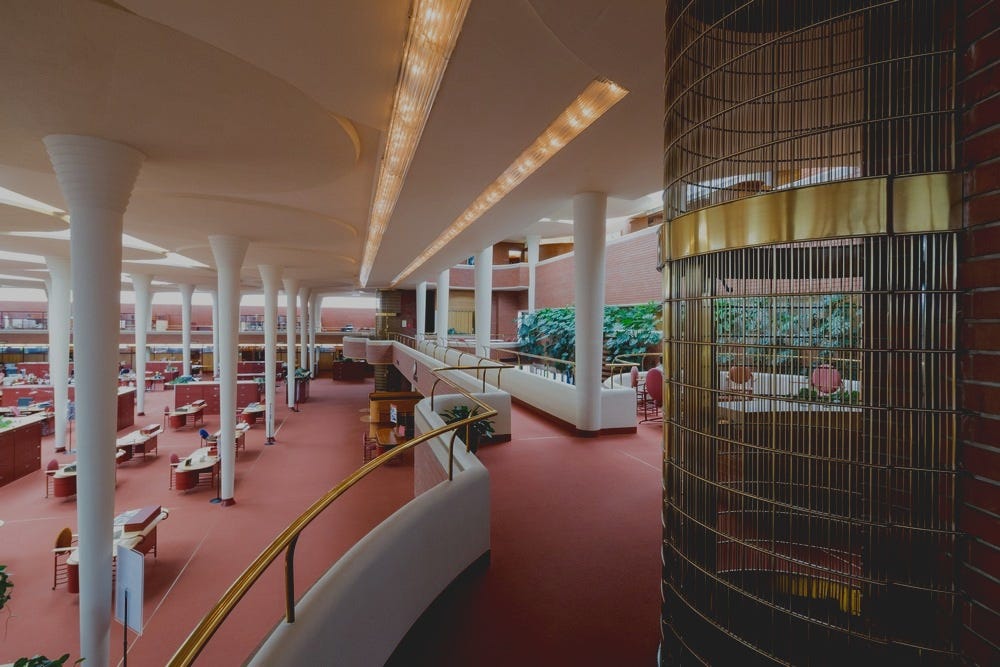
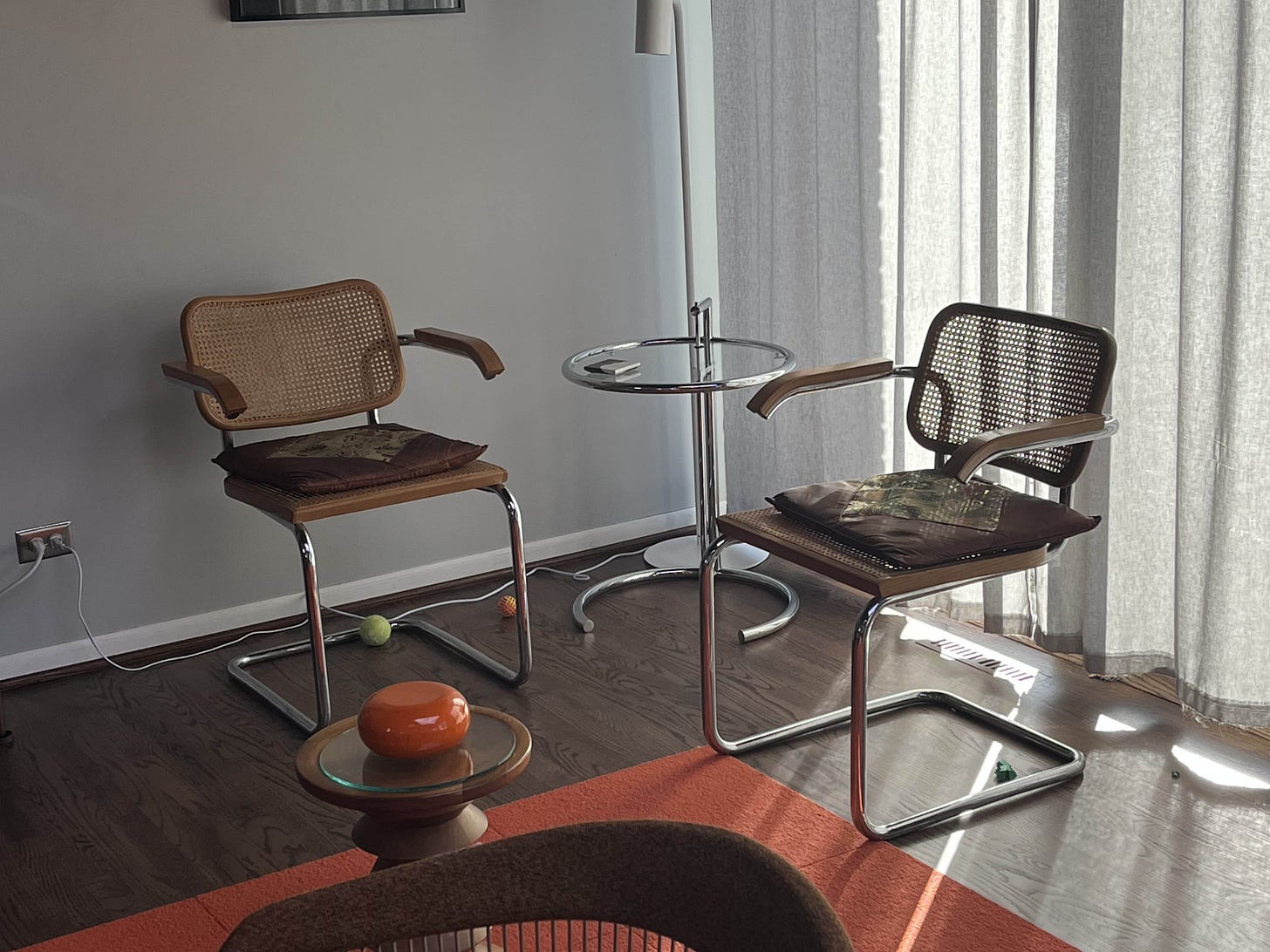
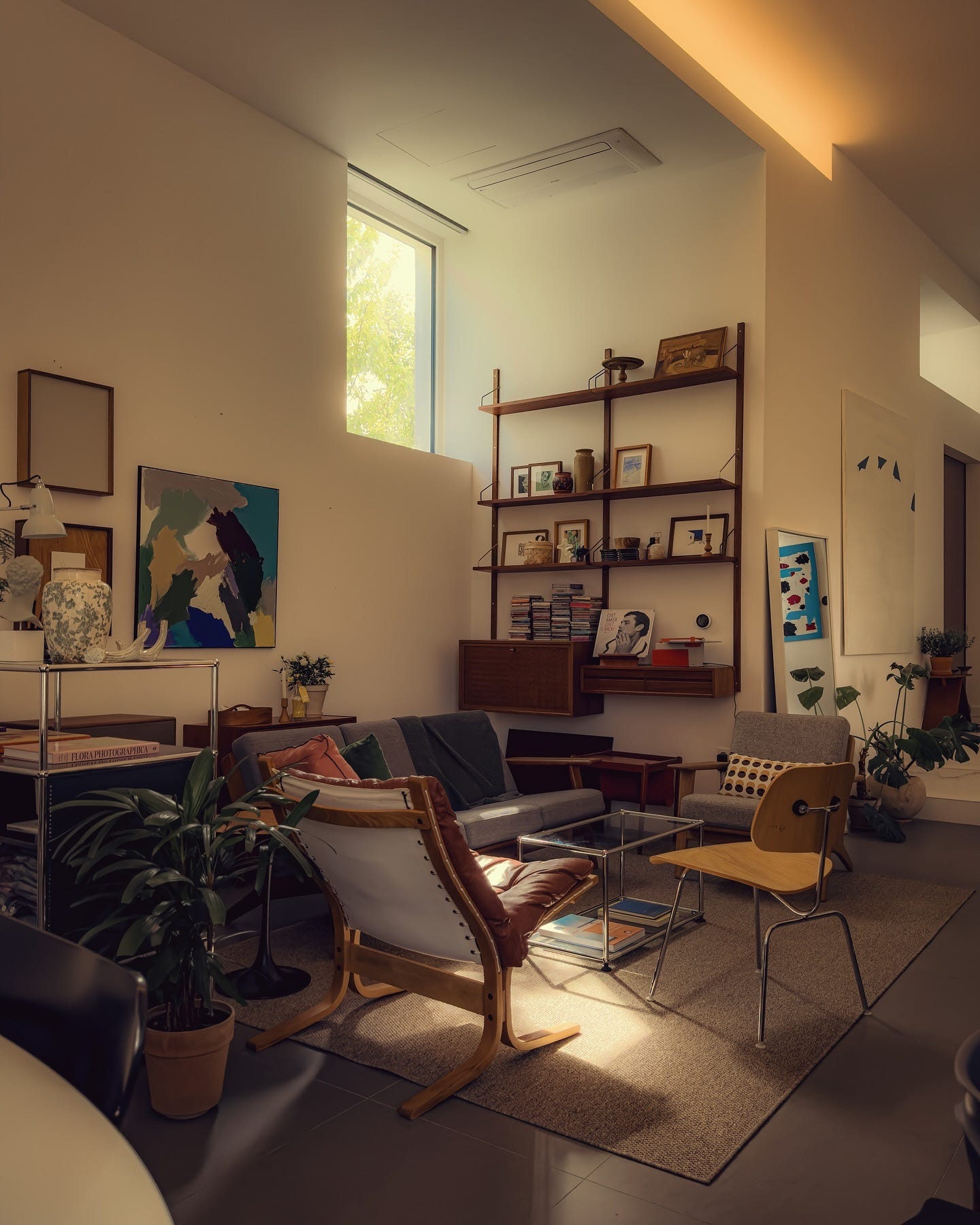
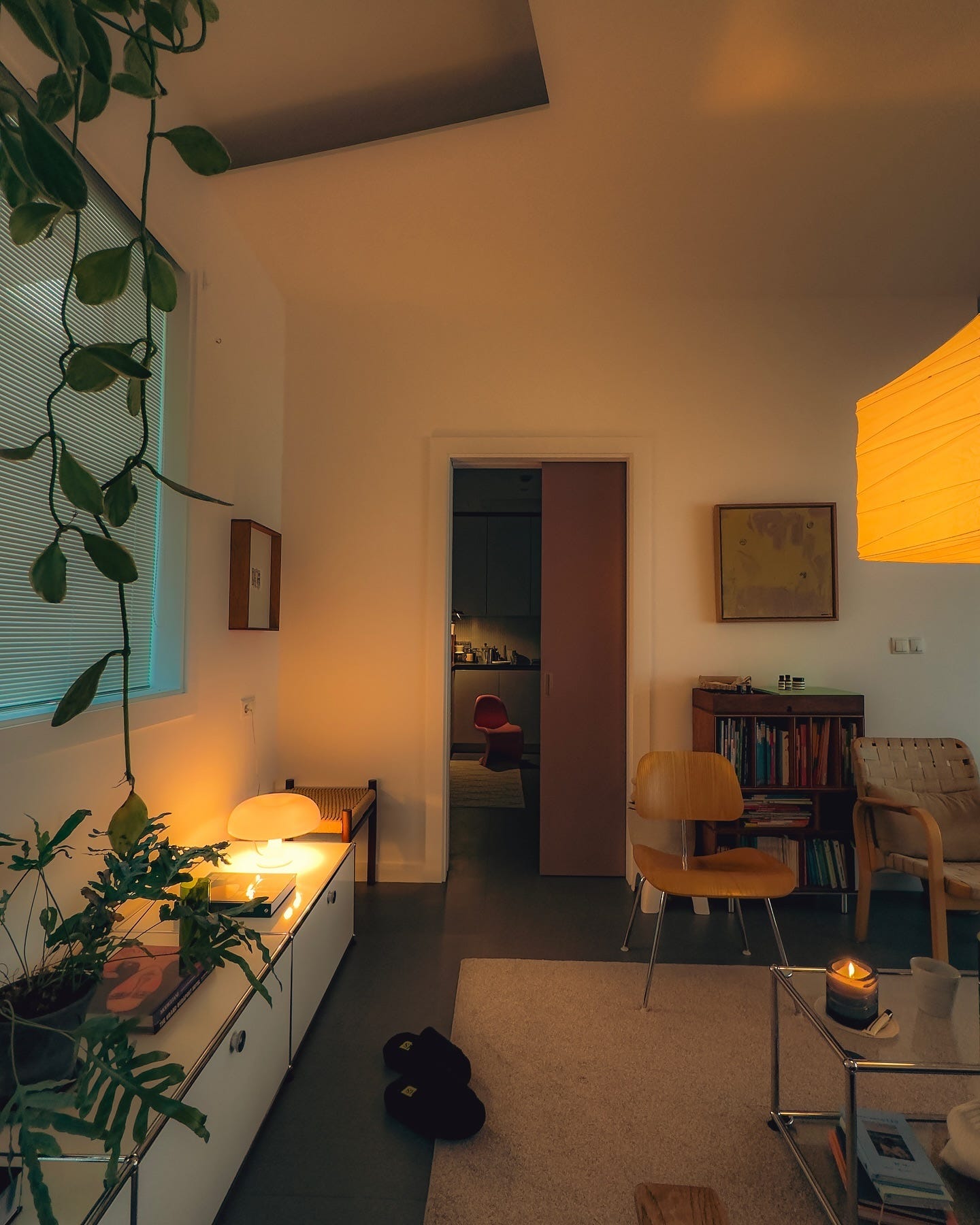
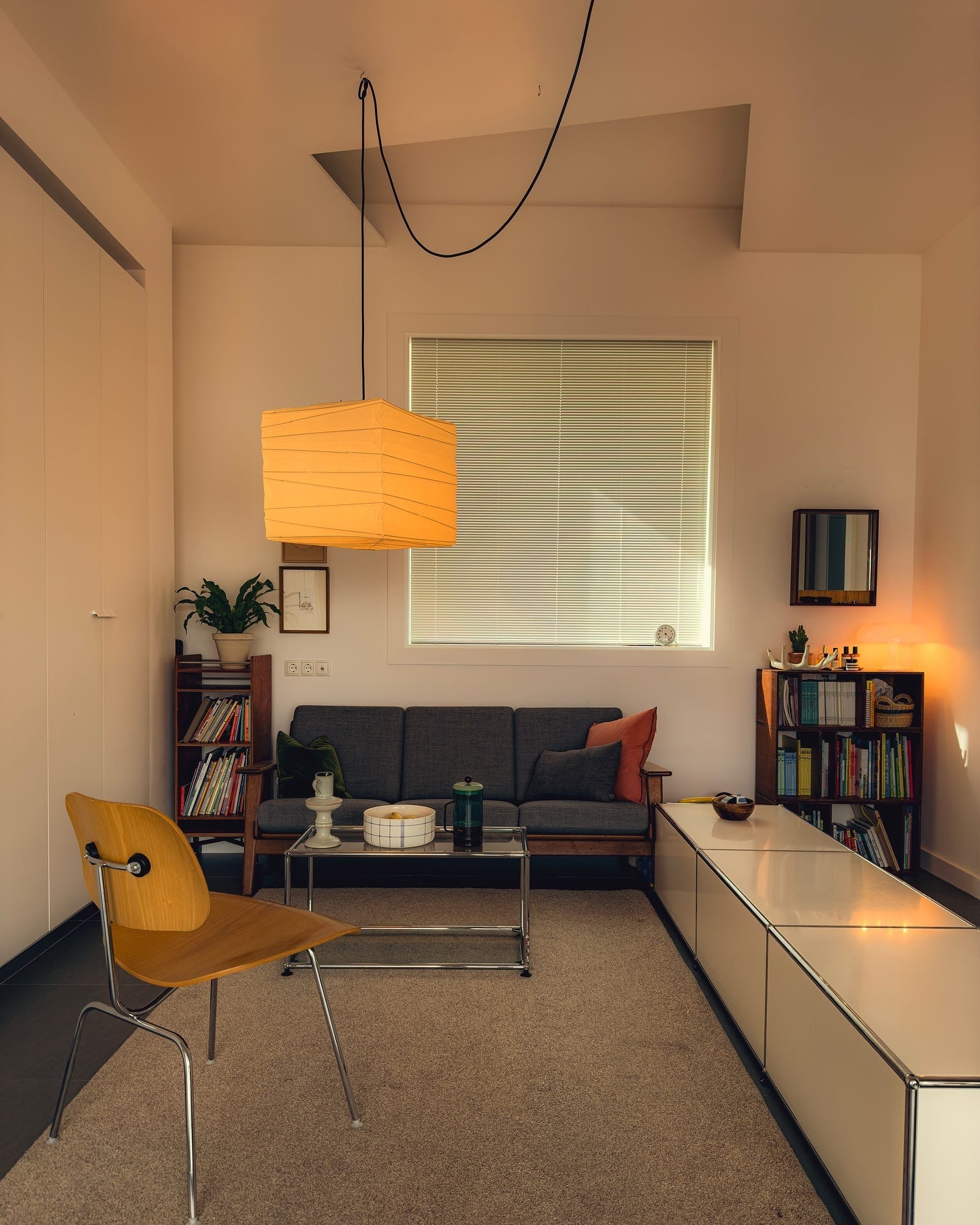
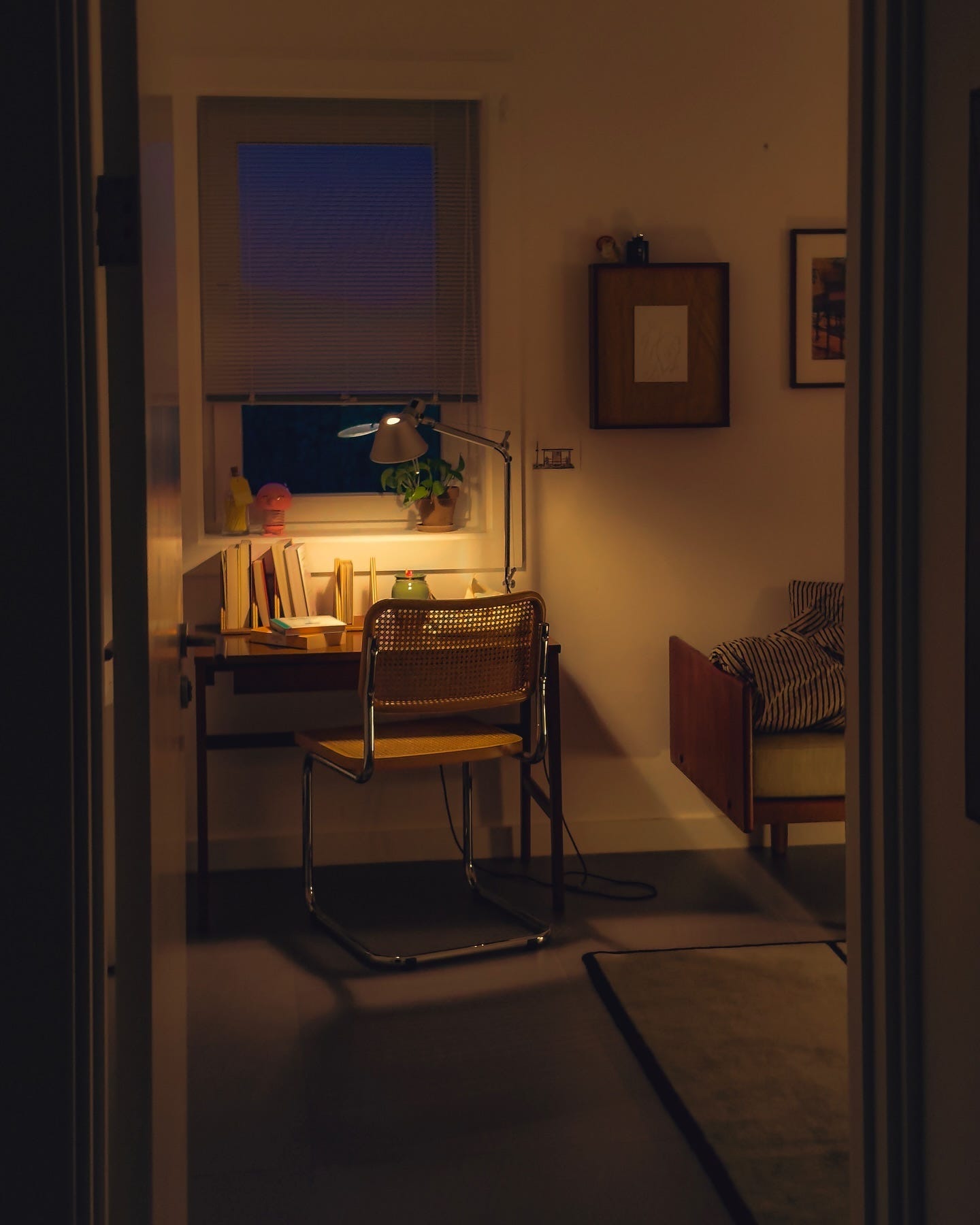
“When your house contains such a complex of piping, flues, ducts, wires, lights, inlets, outlets, ovens, sinks, refuse disposers, hi-fi reverberators, antennae, conduits, freezers, heaters – when it contains so many services that the hardware could stand up by itself without any assistance from the house, why have a house to hold it up?” - Reyner Banham https://socks-studio.com/2011/10/31/francois-dallegret-and-reyner-banham-a-home-is-not-a-house-1965/
I particularly love USM furniture, but agree it is cold, but paired with those warm objects it does completely balance those spaces.